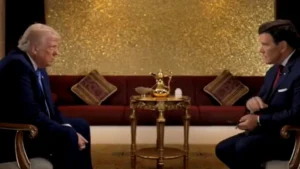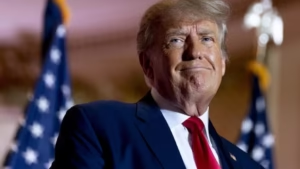Pope Francis, the spiritual leader of over a billion Roman Catholics, passed away early Monday morning, according to an official video statement released by the Vatican on Easter Monday. His death comes just one day after a surprising public appearance on Easter Sunday, during which the 88-year-old — recently recovering from a serious bout of double pneumonia — greeted more than 35,000 faithful from his popemobile in St. Peter’s Square.
So, what unfolds next?
The death of a pope sets in motion a centuries-old sequence of solemn traditions and administrative protocols. Here’s a step-by-step look at what happens following the passing of the pontiff:
1. Confirmation of Death
The responsibility of officially confirming the pope’s death lies with the Camerlengo — currently Cardinal Kevin Farrell. Following custom, he will call the pope’s baptismal name three times. After receiving no response, the pope is declared deceased.
As part of the ritual, the papal ring, known as the Fisherman’s Ring, is ceremonially destroyed, symbolizing the end of his papal authority. The Camerlengo then informs the College of Cardinals, who, in turn, announce the news to the public.
2. Papal Burial and Mourning (Novemdiales)
Immediately after the pope’s death is confirmed, the Church enters a nine-day mourning period, known as Novemdiales. During this time, daily Masses are held, and the pope’s body is made available for public viewing at St. Peter’s Basilica.
Traditionally, the pope is laid to rest between four to six days after death, often in the Vatican Grottoes beneath the Basilica. However, Pope Francis had expressed a preference for a more modest burial at Santa Maria Maggiore, one of his most beloved churches in Rome, using a simple wooden and zinc coffin.
3. Sede Vacante: The Seat Is Vacant
The death of a pope marks the beginning of Sede Vacante, Latin for “the seat being vacant.” During this time, the College of Cardinals assumes temporary leadership of the Church. No major decisions or policy changes are made during this transitional phase. Around the world, Catholics observe this period through prayer and reflection.
4. Preparing for the Conclave
Roughly 15 to 20 days after the pope’s death, preparations begin for the conclave — the ancient and highly secretive process of electing the new pontiff.
All cardinals under the age of 80 are summoned to the Sistine Chapel, where they gather in seclusion. To elect a new pope, a two-thirds majority is required. The outcome of each vote is communicated to the public via smoke: black smoke means no decision has been reached, while white smoke signals that a new pope has been elected.
5. The Conclave and Election of the New Pope
Once a cardinal is elected and accepts the role, he chooses a new papal name — a symbolic decision that often reflects the tone and values of his papacy. This marks a defining moment in Church history, signaling both continuity and the potential for new directions in doctrine and leadership.
6. “Habemus Papam” – We Have a Pope
With the election finalized, the Cardinal Protodeacon emerges onto the central balcony of St. Peter’s Basilica and delivers the iconic phrase: “Habemus Papam” (“We have a Pope”). Moments later, the new pope appears before the world and offers his first apostolic blessing, the Urbi et Orbi — “To the city and to the world.”







